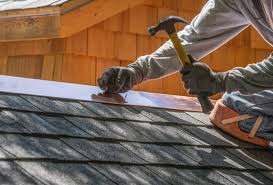Roof leaks can be a homeowner’s nightmare, leading to water damage, mold growth, and structural issues if not addressed promptly. Understanding the causes, signs, and repair options for a roof leak is crucial to maintaining your home’s integrity. This guide will explore the key aspects of roof leak repair, providing you with essential information to handle this common issue effectively.
1. Common Causes of Roof Leaks
Several factors can lead to roof leaks, and identifying the root cause is the first step in roof leak repair. Some common causes include:
- Aging Roofing Materials: Over time, roofing materials deteriorate due to weathering, leading to cracks and gaps.
- Storm Damage: High winds, heavy rain, or hail can damage shingles or flashing, creating entry points for water.
- Clogged Gutters: When gutters are blocked, water can overflow onto the roof, causing leaks.
- Improper Installation: Poor workmanship during roof installation can lead to vulnerabilities that result in leaks.
- Lack of Maintenance: Neglecting regular roof inspections and maintenance can allow minor issues to develop into major leaks.
2. Signs of a Roof Leak
Recognizing the early signs of a roof leak can prevent extensive damage. Look out for:
- Water Stains on Ceilings or Walls: Yellow or brown stains indicate water intrusion.
- Dripping Water: Active leaks during rain are a clear sign of a problem.
- Mold or Mildew: Persistent dampness can lead to mold growth, often accompanied by a musty odor.
- Missing or Damaged Shingles: Shingles that are cracked, curled, or missing can expose the roof to water ingress.
- Sagging Roof Deck: A roof deck that sags is a serious sign of water damage and requires immediate attention.
3. DIY Roof Leak Repair Steps
While some leaks require professional intervention, minor leaks can often be addressed with DIY methods. Here’s how to proceed with a basic roof leak repair:
Step 1: Locate the Leak
Identifying the exact source of the leak is critical. Start by inspecting the attic for water stains, mold, or damaged insulation. If the attic doesn’t reveal the source, examine the roof surface for damaged shingles or flashing.
Step 2: Remove Damaged Shingles
Using a pry bar, carefully lift and remove the damaged shingles. Be cautious not to damage adjacent shingles.
Step 3: Apply Roofing Cement
Apply roofing cement to the underside of the replacement shingle and the area where the shingle will sit. Press the shingle firmly into place.
Step 4: Seal the Area
Use roofing nails to secure the new shingle, and apply a layer of roofing cement over the nail heads to prevent water infiltration.
Step 5: Inspect and Test
Once the repair is complete, inspect the area for proper sealing and test by spraying water to ensure the leak is fixed.
4. Professional Roof Leak Repair Services
For more severe leaks or extensive damage, it’s advisable to hire professional roofers. Professional services offer several benefits:
- Expert Diagnosis: Professionals can accurately pinpoint the cause of the leak and recommend appropriate repairs.
- Quality Materials: They use high-quality materials and techniques to ensure long-lasting repairs.
- Safety: Roof repairs can be dangerous, and professionals have the necessary safety equipment and training.
- Warranty: Many professional services offer warranties on their work, providing peace of mind.
5. Preventing Future Roof Leaks
Preventative maintenance is key to avoiding future leaks. Here are some tips to keep your roof in good condition:
- Regular Inspections: Schedule annual roof inspections to catch and repair minor issues before they escalate.
- Gutter Cleaning: Keep gutters and downspouts clear of debris to prevent water backup.
- Trim Overhanging Branches: Tree branches that rub against the roof can cause damage over time.
- Address Damage Promptly: Immediate repair of damaged shingles or flashing can prevent leaks from worsening.
6. Costs of Roof Leak Repair
The cost of roof leak repair varies depending on the extent of the damage and the materials required. On average, homeowners can expect to pay:
- Minor Repairs: $150 to $400 for small leaks or a few damaged shingles.
- Moderate Repairs: $400 to $1,000 for more extensive repairs involving multiple shingles or flashing.
- Major Repairs: $1,000 and up for significant damage, structural repairs, or roof replacement.
7. Choosing a Roofing Contractor
Selecting the right contractor is crucial for effective roof leak repair. Consider the following when hiring a roofer:
- Licensing and Insurance: Ensure the contractor is licensed and insured to protect against liability.
- Experience: Choose a contractor with a proven track record in roof repair.
- References: Ask for references or read online reviews to gauge customer satisfaction.
- Warranty: Opt for contractors who offer a warranty on their workmanship.
Conclusion
Addressing roof leaks promptly is essential to maintaining the structural integrity of your home. Whether through DIY methods or professional services, effective roof leak repair can save you from costly damage in the long run. Regular maintenance and inspections are your best defense against future leaks, ensuring your roof remains in top condition.
FAQs
1. What is the most common cause of roof leaks? The most common cause of roof leaks is aging roofing materials, which deteriorate over time due to exposure to the elements.
2. How can I tell if my roof is leaking? Signs of a roof leak include water stains on ceilings or walls, dripping water, mold or mildew growth, and missing or damaged shingles.
3. Can I fix a roof leak myself? Minor leaks can often be repaired with DIY methods, but extensive damage should be handled by professional roofers.
4. How much does professional roof leak repair cost? The cost varies but generally ranges from $150 for minor repairs to over $1,000 for major repairs.
5. How can I prevent future roof leaks? Regular roof inspections, gutter cleaning, and prompt repair of minor damage are effective ways to prevent future leaks.
This guide on roof leak repair aims to equip you with the knowledge to handle roof leaks efficiently, ensuring the longevity and safety of your home.



